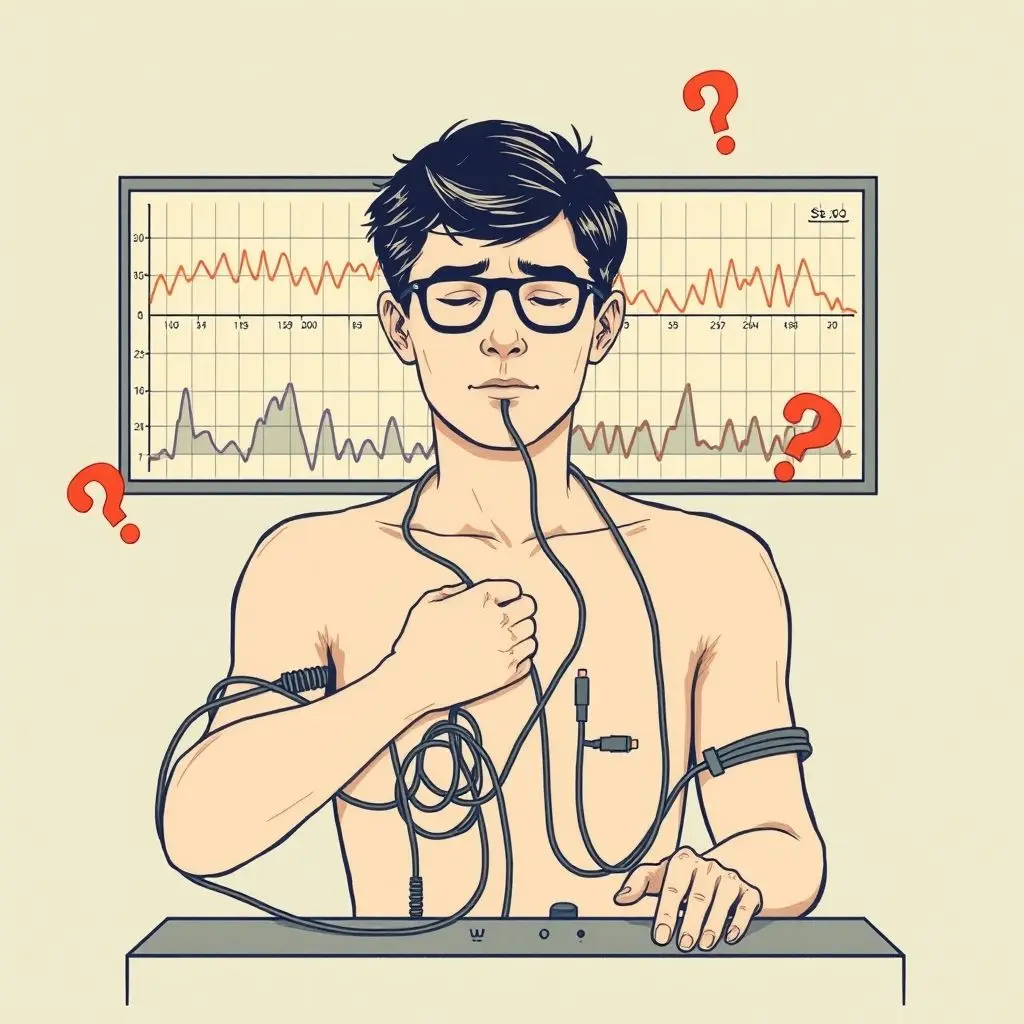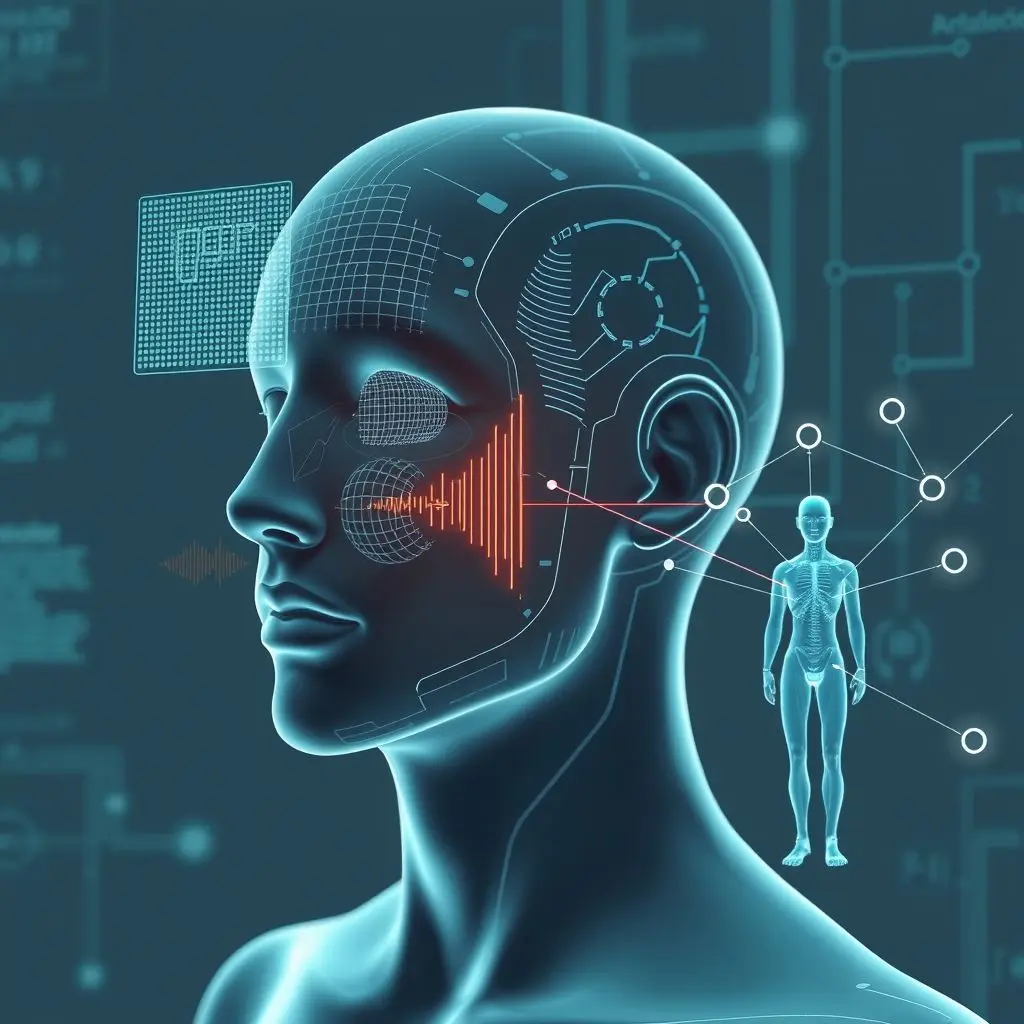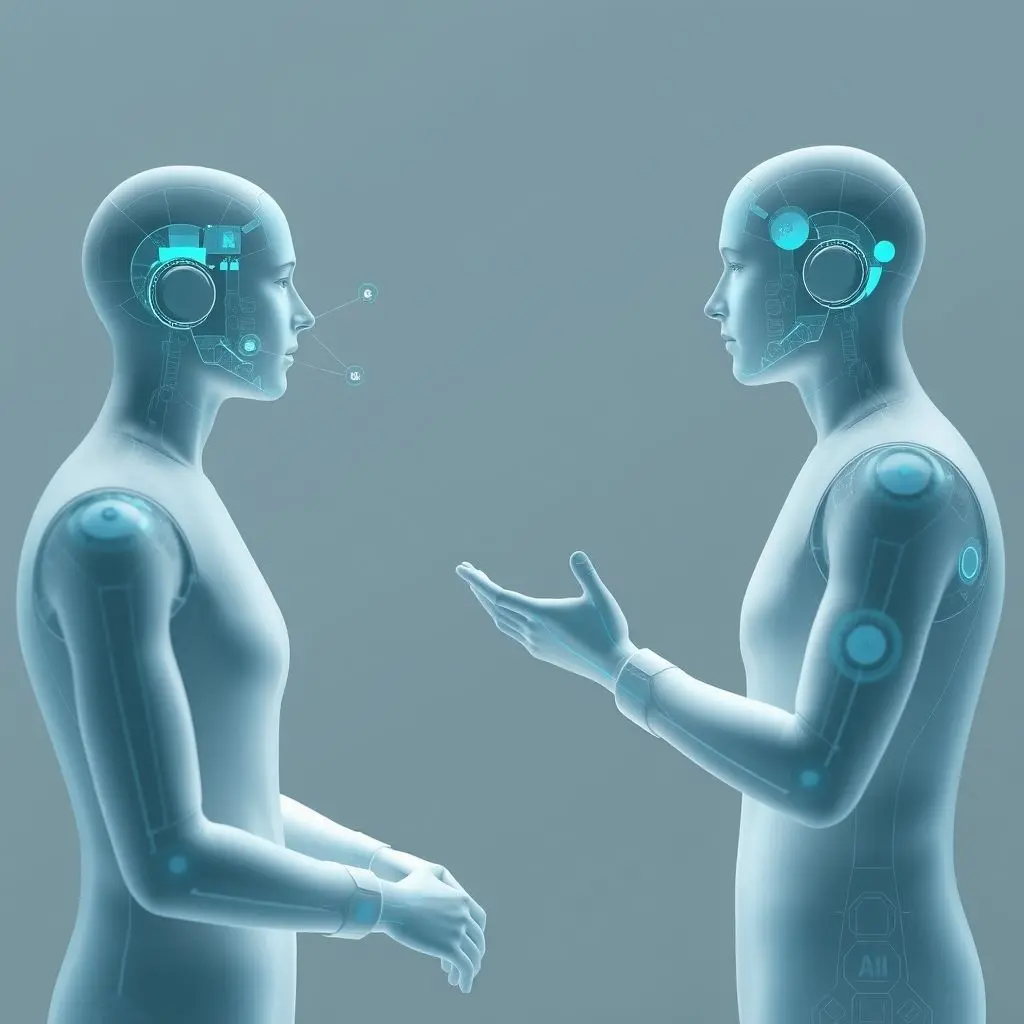Forget the smoky backrooms and the tense silence broken only by the scratch of a pen and the rhythmic beep of machinery. When you think of lie detection, chances are the classic polygraph comes to mind – that intimidating setup of wires and sensors measuring heart rate, sweat, and breathing. It’s been the standard for decades, a staple in thrillers and investigations alike. But here’s a little secret the movies often leave out: the polygraph doesn’t actually detect lies. It measures physiological responses often *associated* with stress or anxiety, which *might* occur when someone is being deceptive. And as anyone who’s ever felt nervous telling the truth knows, those responses aren’t exclusive to liars. Plus, with a bit of training (or perhaps just an incredibly calm demeanor), it’s possible to manipulate those signals.
Now, imagine a different approach. One that doesn’t rely on the blunt instrument of stress responses but delves into the subtle, fleeting cues we barely notice. Think microscopic twitches around the eyes, almost imperceptible shifts in vocal tone, or unconscious adjustments in posture. This is where Artificial Intelligence steps in, promising a potentially revolutionary shift in the ancient quest to uncover truth.
In a world increasingly driven by data, could AI analyze the myriad signals we emit – often without realizing it – to discern truth from falsehood with greater accuracy than the old ‘lie detector’ machine? That’s the intriguing question we’re exploring. Before we dive deep, take a quick look at this short video that encapsulates the core idea:
Let’s peel back the layers and see if AI’s digital gaze can truly find the truth hiding behind the screen.
Table of Contents
The Traditional Polygraph: More Stress Detector, Less Lie Detector
To understand AI’s potential impact, we first need to grasp the limitations of the technology it aims to surpass. The polygraph, often referred to informally as a ‘lie detector,’ relies on the principle that telling a lie causes stress, and this stress manifests in involuntary physiological changes. It typically measures:
- Cardiovascular Activity: Changes in heart rate and blood pressure.
- Respiratory Activity: Variations in breathing patterns.
- Electrodermal Activity (GSR): Changes in sweat gland activity, affecting skin conductivity.
During a test, a subject is asked a series of questions: irrelevant questions (used as a baseline), control questions (designed to evoke anxiety in most people, even truthful ones, about past minor misdeeds), and relevant questions (probing the specific issue at hand). Examiners look for significant physiological spikes when answering relevant questions compared to the others. The theory is that a deceptive person will show a stronger stress response to the relevant questions.
However, the critical flaw lies in the assumption that only deception causes these stress responses. Fear, anxiety, anger, surprise, or even just the stress of being hooked up to a machine and questioned can trigger similar physiological changes. Conversely, a pathological liar, a trained individual, or someone using countermeasures might suppress these responses. This is why polygraph results are often inadmissible in court as definitive proof of guilt or innocence and are considered more of an investigative tool or a means to potentially elicit confessions.

AI’s Different Lens: Analyzing Subtle Human Cues
Unlike the polygraph’s focus on generalized stress signals, AI approaches lie detection by looking for the subtle, often unconscious, behavioral cues that humans exhibit when under cognitive load or attempting deception. These cues are far more numerous and complex than simple heart rate changes. AI systems are trained on vast datasets containing videos, audio recordings, and text samples of people being truthful and deceptive (often in controlled experimental settings). Through machine learning algorithms, they learn to identify patterns and correlations between specific behaviors and deception.
Think of it like this: A human observer might notice someone fidgeting or avoiding eye contact. An AI, however, can analyze the frequency, duration, and type of fidgeting, correlate it with micro-expressions lasting milliseconds, detect minute changes in vocal pitch undetectable to the human ear, and analyze linguistic patterns like increased use of hedging words or changes in sentence complexity. It’s about analyzing a much richer, multi-modal stream of data.
Diving Deeper: What Specific Cues Does AI Analyze?
AI systems designed for deception detection can analyze a range of signals, often in combination:
Micro-expressions
These are involuntary facial expressions that last only a fraction of a second (typically 1/25 to 1/15 of a second). They reveal genuine emotions that a person might be trying to conceal. AI can analyze video feeds frame-by-frame to detect these fleeting expressions (like a flash of fear, anger, or sadness) that are easily missed by human observers.
Vocal Analysis
Deception can affect vocal characteristics. AI can analyze speech patterns, including changes in pitch, tone, rhythm, pauses, speech rate, and even subtle tremors or tension in the voice. Lies often require more cognitive effort, which can manifest in these paralinguistic cues.
Body Language and Gestures
While often culturally influenced and context-dependent, body language can provide clues. AI can track posture shifts, hand gestures (like fidgeting or self-touching), leg movements, and head movements. Consistency or inconsistency between verbal statements and non-verbal behavior can be flagged.
Eye Tracking and Gaze Analysis
Patterns of eye movement and gaze direction are complex and not simple indicators of lying (e.g., looking up and to the left doesn’t universally mean someone is fabricating). However, AI can analyze patterns like blink rate, pupil dilation, and sequences of gaze shifts, looking for deviations from baseline behavior or patterns observed in training data associated with deception.
Linguistic and Sentiment Analysis
What words are used, and how are they structured? AI can analyze text or transcribed speech for linguistic markers sometimes associated with deception, such as using fewer first-person pronouns, more negative emotion words, simpler sentence structures, or providing fewer details. Sentiment analysis can gauge the emotional tone of the language used.

The Accuracy Showdown: AI vs. Polygraph
So, the big question: Is AI better? Early research, primarily conducted in controlled laboratory settings, suggests that AI systems analyzing behavioral cues *can* achieve higher accuracy rates than traditional polygraphs in those specific environments. While polygraph accuracy is debated and often cited in the 70-85% range under ideal conditions, some AI studies have reported accuracy rates in the 85-90% range or even higher for specific types of deception or datasets.
The key phrase here is “controlled environments.” In a lab, researchers can standardize questions, scenarios, and data collection methods. The real world is far messier. People move freely, lighting changes, audio quality varies, and contexts are diverse. AI still faces significant challenges in maintaining high accuracy when deployed in unpredictable real-world situations. Moreover, the metrics and methodologies used to measure accuracy vary widely between studies, making direct comparisons tricky.
Disclaimer: Reported accuracy rates for both polygraphs and AI systems vary significantly depending on the study design, the population tested, the type of deception, and the metrics used. These figures should be treated as indicative of potential rather than definitive, universal performance.

The Significant Hurdles AI Must Overcome
Despite the promising research, AI lie detection is far from a perfected, ready-for-prime-time technology. Several significant challenges need to be addressed:
Data Privacy and Ethical Concerns
Training AI requires massive amounts of data, often video and audio recordings of human behavior. Collecting, storing, and analyzing this sensitive information raises huge privacy concerns. How is this data secured? Who has access to it? What are the implications of constantly monitoring and analyzing individuals’ subtle behaviors?
Algorithmic Bias
AI systems are only as unbiased as the data they are trained on. If the datasets disproportionately represent certain demographics or are collected in culturally specific contexts, the AI might incorrectly flag innocent behaviors from underrepresented groups as deceptive or fail to recognize deceptive cues from overrepresented groups. This could perpetuate or even amplify societal biases.
Real-World Applicability and Robustness
As mentioned, lab conditions are ideal. Can AI reliably detect deception in noisy environments, with poor lighting, different camera angles, or when subjects are aware they are being analyzed by AI and might try to adapt their behavior? Systems need to be robust enough to handle the variability of the real world.
Context Sensitivity and Individual Differences
Behavioral cues are highly dependent on context, culture, and individual personality. What might look like nervousness in one person or situation could be normal behavior or reflect a different emotion in another. AI needs to become sophisticated enough to understand these nuances rather than applying rigid pattern matching.
The Definition of “Truth” and “Lie”
Deception is complex. Is a white lie the same as malicious deceit? How does AI differentiate between someone genuinely mistaken and someone deliberately lying? The AI detects *patterns correlated with deception* in its training data, not necessarily the internal state of knowing falsehood. The AI can’t know the objective truth, only analyze behavior relative to an asserted statement.

The Search for Truth Continues: AI’s Place in the Future
AI lie detection is not yet the infallible truth serum of science fiction. It’s a rapidly evolving field with exciting potential but also significant ethical and technical hurdles. While it may not replace human judgment entirely, it could become a powerful tool to assist investigators, security personnel, or even recruiters by flagging areas or individuals that warrant closer human attention.
The future might see a hybrid approach where AI provides initial analysis based on complex behavioral data, and trained humans interpret these findings within their broader context. Regulation and transparency will be crucial to ensure this technology is developed and used responsibly, mitigating risks of bias, misuse, and unwarranted surveillance.
The journey from twitching needles to intelligent algorithms in the pursuit of truth is fascinating. AI offers a new, data-driven perspective, analyzing the countless subtle signals we broadcast. Whether it will ultimately prove a more reliable path to uncovering deception than its analog predecessors remains to be seen, contingent on overcoming its current limitations and navigating the complex ethical landscape.
Frequently Asked Questions (FAQs)
Is AI lie detection currently used widely?
While research is ongoing and some experimental systems exist, AI lie detection is not yet widely deployed in critical applications like courtrooms or widespread security screening due to accuracy limitations in real-world settings and significant ethical concerns.
Can someone fool an AI lie detector?
It’s likely possible, just as polygraphs can be potentially tricked. If someone is aware of the cues the AI is looking for, they might attempt countermeasures to alter their behavior. However, AI analyzes a much broader range of cues, making it potentially harder to control them all simultaneously.
Does AI lie detection violate privacy?
Potentially, yes. The technology often requires collecting detailed visual, auditory, and behavioral data, raising significant privacy concerns about surveillance and data security. Robust ethical guidelines and regulations are needed.
Is AI lie detection biased?
There is a significant risk of bias if the AI is trained on datasets that are not diverse or representative, or if human biases influence the labeling of training data. This could lead to the AI being less accurate or unfairly targeting certain groups.
Will AI replace human interviewers or investigators?
It’s more likely that AI will serve as a tool to assist human professionals rather than replace them. Humans bring crucial context, intuition, and the ability to build rapport, which AI currently lacks. A hybrid approach combining AI analysis with human interpretation seems more probable.

The pursuit of detecting deception is as old as humanity itself. From ancient trials by ordeal to the modern polygraph and now, AI’s complex algorithms, we’ve continuously sought methods to distinguish truth from lies. AI brings unprecedented analytical power to bear on this challenge, scrutinizing the most subtle human signals. While it holds the promise of potentially exceeding the capabilities of older methods in certain scenarios, its journey is marked by complex ethical questions and the need to prove its reliability beyond controlled conditions. The conversation around AI and truth is just beginning, prompting us to consider not just what technology *can* do, but what it *should* do as it delves deeper into the intricacies of human behavior.





